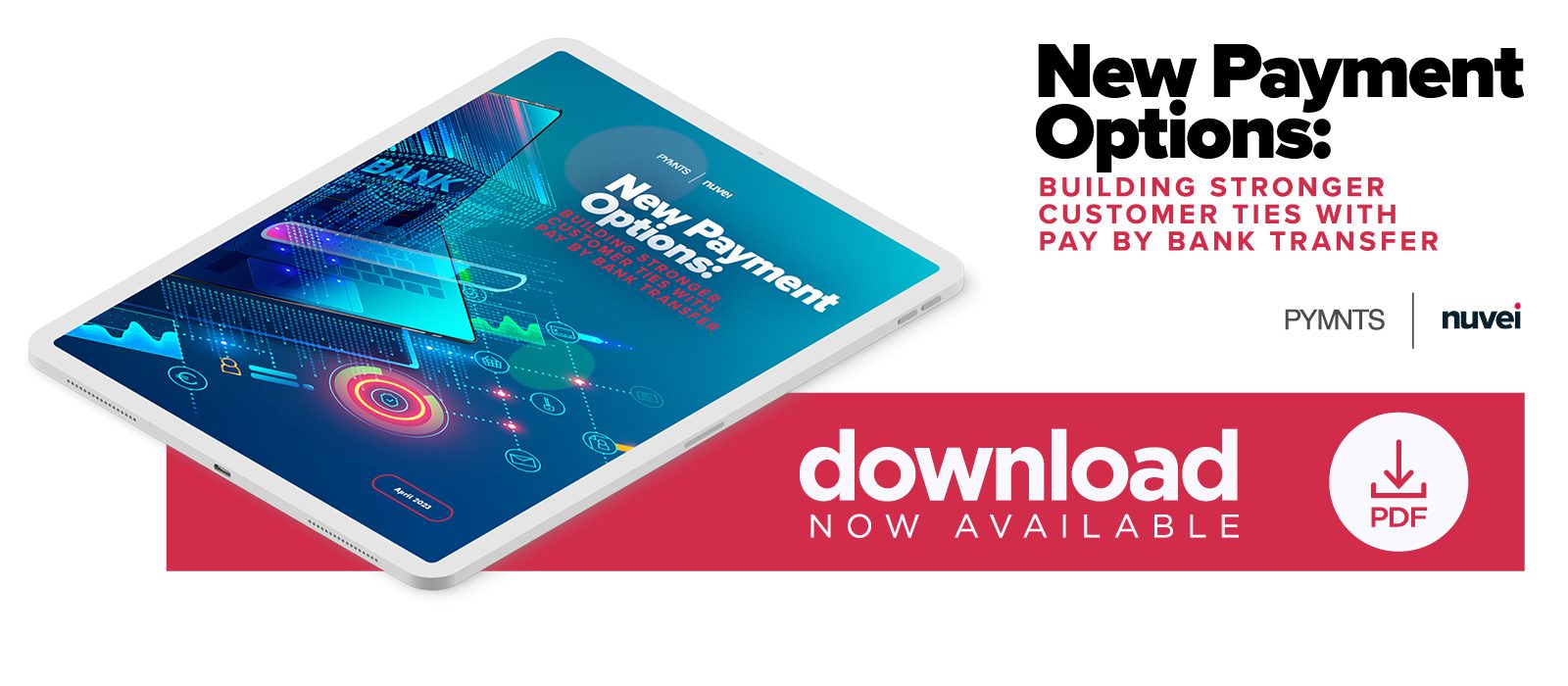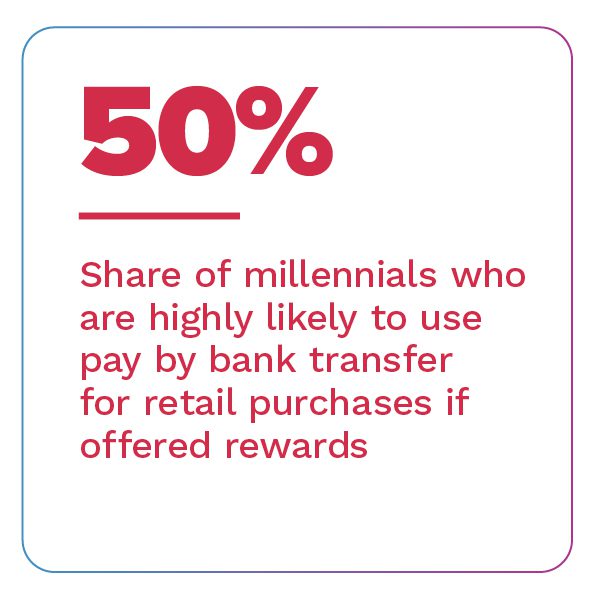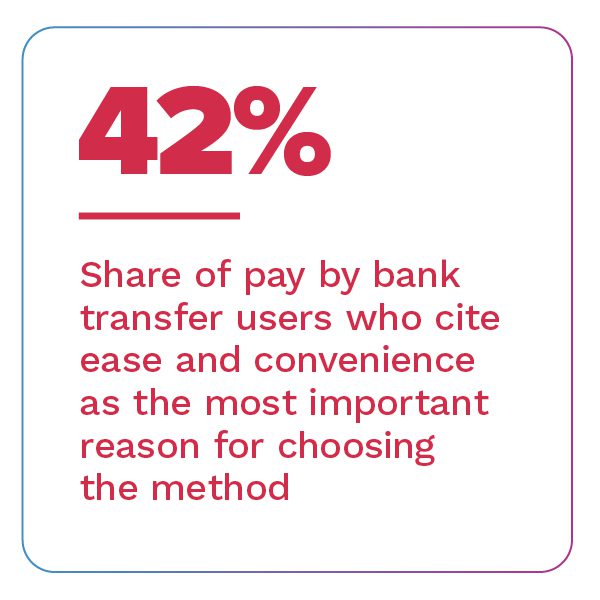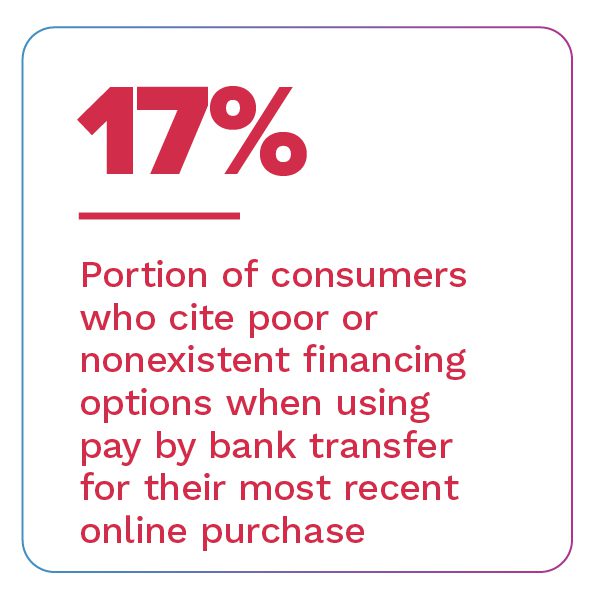Rewards Hold the Key to Bringing Pay by Bank Transfer Into the Mainstream

Credit and debit cards remain consumers’ dominant means of payment despite years of payment innovation.
 Online bank transfers, for example, have become a popular method for bill payments. This method’s consistency and ease of use have endeared it to consumers and allowed it to begin making inroads in online shopping. Our data finds a positive feedback loop among those who use this payment method, also called pay by bank transfer: Consumers who try it are far more likely to want to use it again. In total, 44% of the consumers who have previously paid using an online bank transfer say they are highly interested in using it again. For banks promoting pay by bank transfers, this means that the initial push for adoption is critical.
Online bank transfers, for example, have become a popular method for bill payments. This method’s consistency and ease of use have endeared it to consumers and allowed it to begin making inroads in online shopping. Our data finds a positive feedback loop among those who use this payment method, also called pay by bank transfer: Consumers who try it are far more likely to want to use it again. In total, 44% of the consumers who have previously paid using an online bank transfer say they are highly interested in using it again. For banks promoting pay by bank transfers, this means that the initial push for adoption is critical.
This is one of the key findings in “New Payment Options: Building Stronger Customer Ties With Pay By Bank Transfer,” a PYMNTS and Nuvei collaboration. The report examines consumers’ willingness to use pay by bank transfers for recurring bill payments and online shopping. The findings are based upon a census-balanced survey of 2,056 United States consumers conducted from Jan. 10 to Jan. 13.
More key findings from the study include the following:
• Eighteen percent of consumers used online bank transfers most frequently to pay recurring bills last month.
 Pay by bank transfers were the third most popular means for consumer bill pay, after debit cards and credit cards, our data shows. Consumers say they use this method because they find it easy and convenient: 33% of the consumers who made a recurring bill payment via an online bank transfer say ease and convenience are the most important reasons for using this method.
Pay by bank transfers were the third most popular means for consumer bill pay, after debit cards and credit cards, our data shows. Consumers say they use this method because they find it easy and convenient: 33% of the consumers who made a recurring bill payment via an online bank transfer say ease and convenience are the most important reasons for using this method.
Although consumers are using online bank transfers for purchases far less than they are for paying bills at this time, 42% of the consumers used an online bank transfer when shopping online say ease and convenience are the most important reasons they used the method.
• Although most consumers do not have issues using online bank transfers when online shopping, those that do seem to find multiple aspects difficult.
Consumers report more friction with using online bank transfers to pay for online purchases than when paying bills. We find that 19% of consumers who paid for their most recent online purchase using an online bank transfer report that they encountered some difficulty when initiating a dispute with a merchant, and 19% also say that online bank transfers are difficult to use across multiple devices. Meanwhile, 18% say making or tracking payments using an online bank transfer is difficult, and 17% say the lack of good financing options is an issue. In addit ion, 16% of consumers cite discomfort with the security of this payment method.
ion, 16% of consumers cite discomfort with the security of this payment method.
• Thirty-five percent of consumers would be very or extremely likely to use pay by bank transfers for retail purchases if a rewards program was available.
The appeal of a rewards program for online bank transfers is a clear example where millennials and bridge millennials, consumers aged 27 to 45 who are highly valued by financial institutions, express a greater interest than other age groups. Our data shows that 52% of bridge millennials and 50% of millennials would be very or extremely likely to use online bank transfers to earn points in a rewards program. Just 23% of baby boomers and seniors and 36% of Generation X are interested in a rewards program for using online bank transfers.
To learn more about consumers’ growing interest in using online bank transfers for online shopping and recurring bill payments, download the report.